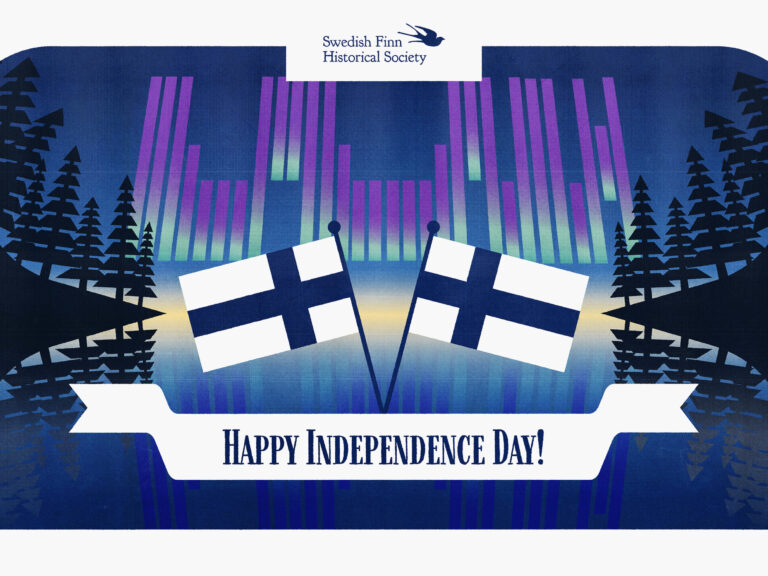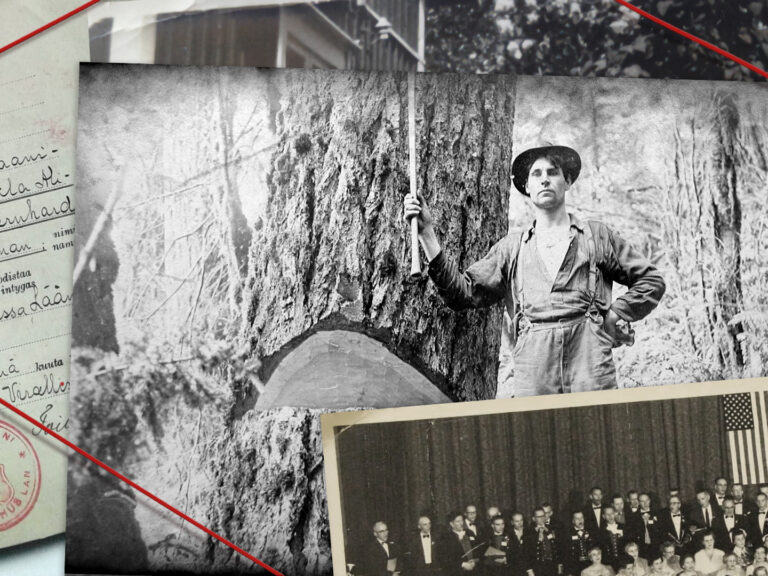Recollections by Viktor Smeds of his childhood in Petalax.
From “Den Österbottniska Byn”.
Translated by June Pelo.
Petalax church village was a typical Österbotten village during my childhood. The church occupied a dominant place, Kyrkbacken, at the edge of the woods. The hill slopes down to the old Vasa-Kristinestad coastal road, and the fork in the road to Pörtom was close by. The settlement was filled by one of the crowded Östrobothnian villages that once was characteristic of the countryside. Petalax was an old village parish. The nearest villages, Molpe in Korsnäs, Ytterby in Malax and Pörtom church village are far off, 10 to 20 kilometers away and the village was in a world by itself.
From the dwellings close to the church, the village was built up by dividing the houses which were on the other side of the river. At the beginning is Krutas and Buss, farther to the west at Krokå bridge is Antonas and Blommi’s torp, Smess-i-bakkan with two farmhouses: Smess and Grousj, and several cottages in back that were separate from the village.
In the 1700s new villages appeared. They were Långbacken, Kråkträsk, Hultholm, Bjurnäs (Bjurus), Viitela. In the east there is Kalltjers torp and a woods village of Mambrin, sometimes jokingly called Viborg. Concentrated in the south are Åmossa, Skott, Lolax, Finnbacken, Ågren, Riddar, Köping, Granholm, Dahl, and Ribacka. The area contained many large and well-built houses, and a new village was created called Nyby” and another village called Gamalby.
Residents of the former village, who descended from Swedish Österbotten, often would consider themselves a bit above the more rustic in a way, more than the conservative old village residents.
In Gamalby, coming from the north on the right of the road was Klockar farm, on the left was Britas, Blandas-Jångas, Neristu, Oppistu, Back-Mattas, Greddjas, Greddjas-Gabrelas, Nystu-Mattas, Nörrstu, Pimmas, Eppus, Mattas-Erkas, Erkmas-Gabbas, Thors, Sebbas-Jångas, Sebbas-Erkas, Antasinars, Spikuras, Holm- Mattas and Holm-Kalas, Lang-Kalas torp.
To the right of the road was Liss-Josepas, Erkmas, Fantas, Lundas-Gabbas and Lin. These were names used in daily speech, different from the official house names. These were clustered together and called Nårr-I-byn. Nearby were the small gray cottages Vektasj-bakkan and Kålta-bakkans. South of the church began Sår-I-byn.
From Lin the following houses were located there: Båsk-Mattas, Listu-Isrelas, Båsk-Häckas, Prest-Kalas, Lundas, Jåss, Kelas, Bäck, Jångas, Pölinas, Emöusas, Smess-Häckas, Däli, Mansinas, Nyers, Jånkas, Minas, Morsis, Gröusj-Kalas, Gröusj-Häckas, Frans-Josepas and Maartinas.
The village farms consisted of various owners with separate names and separate boundaries. In the north were Storsvedan and Brännback, and in front of the village Bergmo, Britas-Trodon and Posthagan; in the west Skurvur, Maron, Langjuton and Stranden and in the south Lappkull, Söderåkrin, Kvänusjbakk, Söderenjen, and Brenjen.





